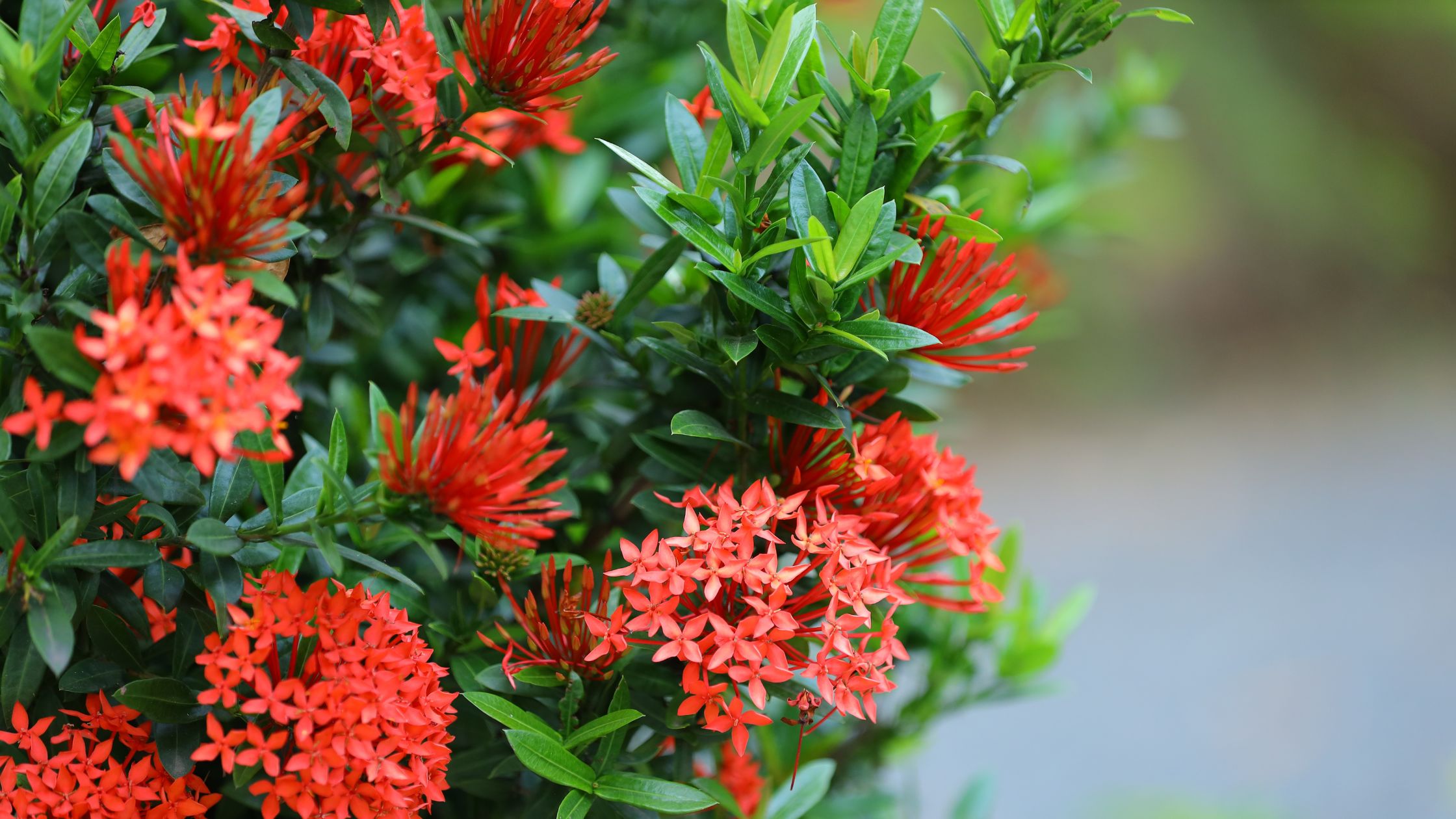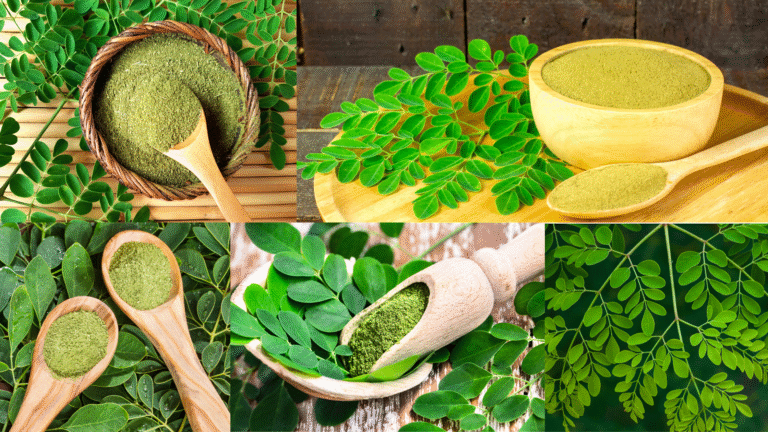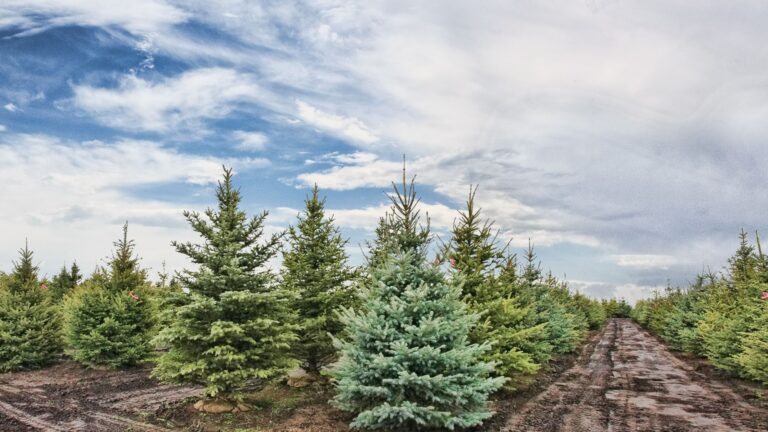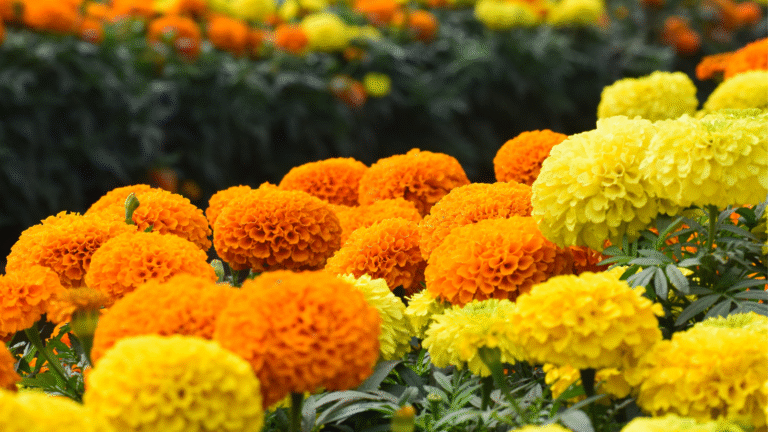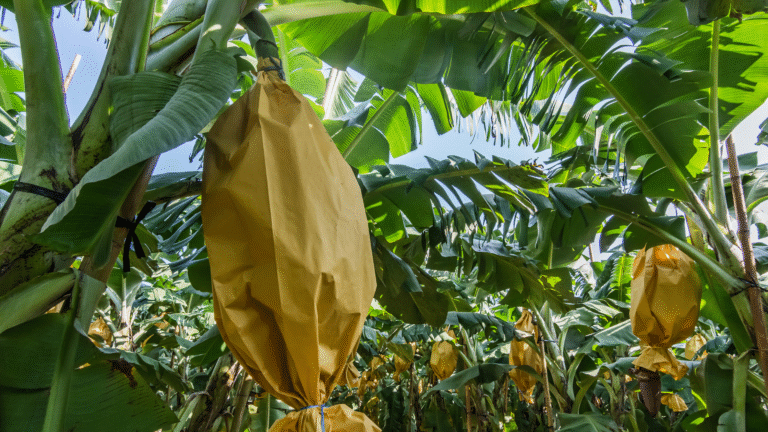Growing Ixora Plant: Comprehensive Guide for Small Gardeners.
The Ixora plant, with its stunning clusters of vibrant flowers, is a beloved tropical plant that brings…
The Ixora plant, with its stunning clusters of vibrant flowers, is a beloved tropical plant that brings a splash of colour to gardens and homes around the world. It is known by charming common names like Jungle Flame and Flame of the Woods.
Its ability to produce abundant, long-lasting blooms in shades of red, orange, yellow, pink, and white makes it a favourite for hedges, borders, and container gardening.
Types of Ixora plant
While Ixora coccinea is the most well-known, breeders have developed numerous cultivars that offer a wide range of colours and sizes.
- Dwarf Ixora plant: These compact varieties, such as Ixora taiwanensis, are perfect for smaller gardens, as a low hedge, or for container planting. They typically grow to a height of 2-4 feet and maintain a bushy shape.
- Large-Flowered Varieties: Some cultivars, like ‘Singapore’, can grow over 5 feet tall and produce exceptionally large flower clusters, making them an excellent choice for a specimen plant or a large, informal hedge.
- Unique Colours: Beyond the classic red and orange, varieties like ‘Fraseri’ offer a reddish-salmon hue, while ‘Crimson King’ boasts a brilliant red. There are also cultivars with pink, yellow, and even bicoloured flowers.
Planting and Care of The Ixora Plant.
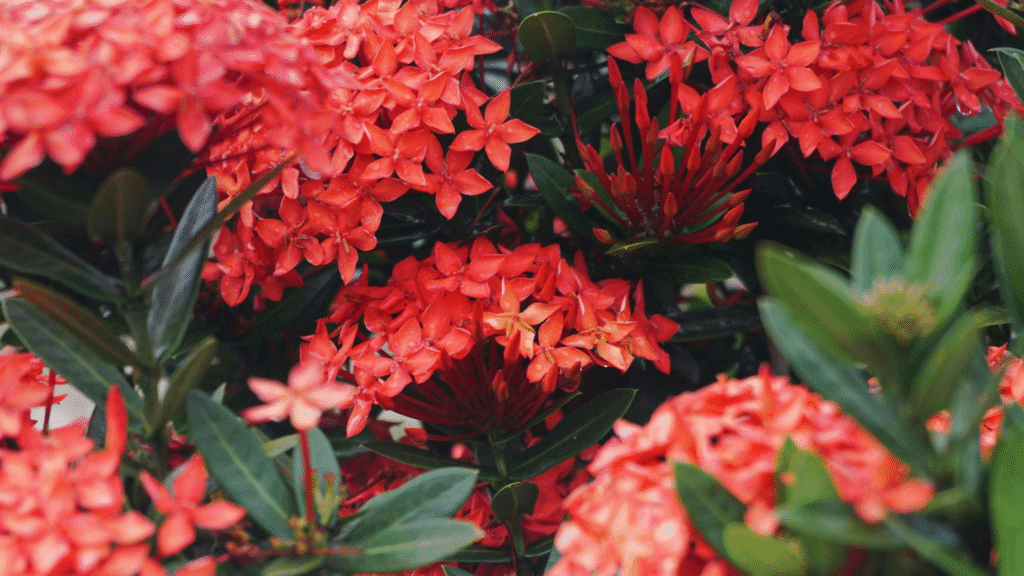
Growing a healthy and floriferous Ixora plant requires attention to a few key needs, all of which are rooted in its tropical origins.
Light
Ixora plants are sun-worshippers. They perform best and produce the most blooms when they receive at least 6 to 8 hours of direct, bright sunlight per day. While they can tolerate some partial shade, especially during the hottest part of the afternoon, too little sun will result in sparse flowering and leggy growth.13 For indoor plants, a south or west-facing window is ideal.
Soil
The most crucial factor for a thriving Ixora is acidic soil. This plant is notoriously sensitive to high pH levels and alkaline soil. The ideal soil pH is between 5.5 and 6.5.
- Outdoor Planting: If your garden soil is naturally alkaline, you’ll need to amend it. Incorporate generous amounts of organic matter, such as peat moss or compost, to lower the pH. Avoid planting Ixora too close to concrete structures like sidewalks or foundations, as the runoff can raise the soil’s pH.
- Container Gardening: For potted plants, use a well-draining, peat-based potting mix. A good combination is equal parts perlite, peat moss, and all-purpose potting soil.
Watering
Ixora plants prefer consistently moist but not waterlogged soil. The best practice is to water deeply and regularly, allowing the top inch of soil to dry out slightly before watering again. Overwatering can lead to root rot, so ensuring good drainage is essential.
Fertilizing
A liquid fertiliser applied every 6-8 weeks can be effective. Avoid fertilisers high in nitrogen, as this will promote leafy growth at the expense of flowers.
Water-soluble fertiliser like NPK 20-20-20 might be good for balanced fertilisers.
Pruning
Pruning is essential for maintaining the plant’s shape, encouraging new growth, and promoting more blooms. The best time to prune is in the spring or right after a major blooming cycle. You can prune to shape the shrub, but avoid heavy shearing, as this can remove the flower buds.
Common Problems and Solutions
Even with the best care, Ixora plants can face some common issues:
- Yellow Leaves (Chlorosis): The most frequent problem is yellowing foliage, which is often a symptom of alkaline soil. Correct this by amending the soil with organic matter and applying chelated iron and manganese supplements.
- Pests: Ixora can be susceptible to common pests like aphids, mealybugs, and scale insects. You can use Imidacloprid or Thiomethoxam technical to reduce or completely control mealybug and scale insects. Use insecticidal spray in the early evening to get better results.
- Lack of Blooms: Due to insufficient sunlight, over-fertilisation (too much nitrogen), or improper pruning. Adjust the plant’s location, reduce nitrogen-rich fertiliser. You can use the PGR or Zinc and boron-based micronutrients to increase the flowering.
- Temperature Sensitivity: If you live in a climate with cold winters, it is best to grow them in containers so they can be moved indoors when temperatures drop below 60°F (15°C).

